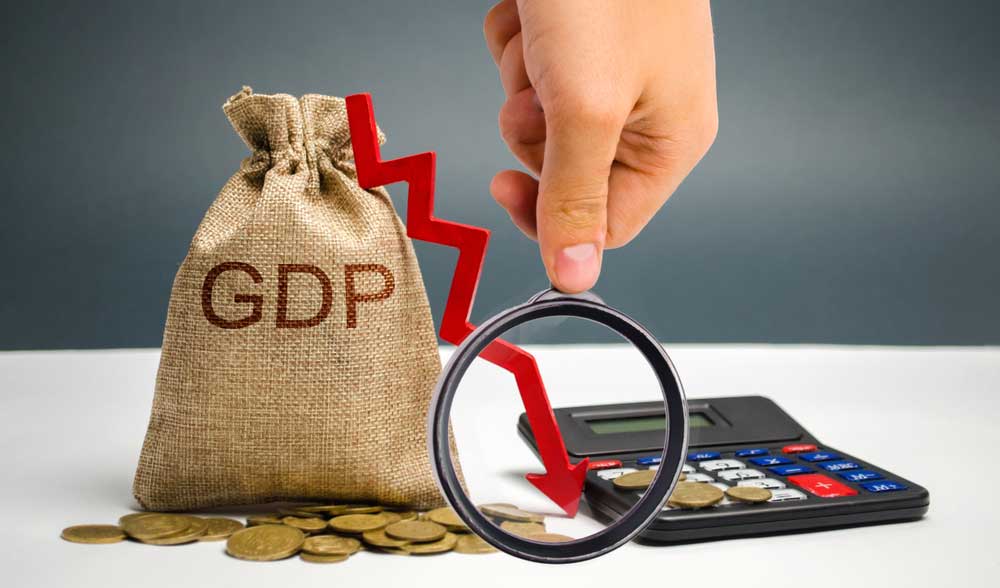The country is expected to experience its deepest recession ever with growth set to contract a massive 45 per cent on a quarter-on-quarter basis for the three months of April to June and 5 per cent in the current financial year, Goldman Sachs has said.
“The deeper trough in our second quarter forecasts (Goldman is referring to a January-December year) reflects the extremely poor economic data we have received so far for March and April and the continued lockdown measures, which are among the most stringent across the world,” Goldman economists Prachi Mishra and Andrew Tilton wrote in a note.
“The minus 5 per cent growth we forecast for FY21 would be deeper compared to all the ‘recessions’ India has ever experienced,” the note said.
The global investment bank had earlier projected the country's GDP to contract 20 per cent in April to June and 0.4 per cent for the financial year ended 2021.
Goldman Sachs is using a different methodology for assessing real GDP growth – one that the US Bureau of Economic Analysis (BEA) uses.
The comparison is on a trailing quarter basis (growth rate in Q2 over the immediately previous quarter, after seasonal adjustments) and then multiplying the resulting figure by four to arrive at the annualised rate. India’s Central Statistics Office (CSO), however, calculates the growth rate over the same quarter in the previous year.
Prime Minister Narendra Modi announced a nationwide lockdown from March 25 to contain the spread of the coronavirus, but the country’s economy has taken a huge hit with almost all activity coming to a grinding halt. On Sunday, Modi extended the lockdown to May 31 albeit with some relaxations.
The investment bank expects a rebound in the July to September quarter of the current fiscal — a 20 per cent quarter on quarter annualised GDP gain compared with 10 per cent earlier.
It has kept its projections unchanged in the third and fourth quarter at 14 per cent and 6.5 per cent, respectively.
“Our estimates now imply that real GDP falls by 5 per cent in 2020-21 (vs -0.4 per cent in our previous forecast). Our global team is now forecasting growth to be at -3.6 per cent in 2020 (calendar year) compared with -2.5 per cent when we last published our India growth forecast on April 17, with risks remaining on the downside. This is close to a 7 percentage point downward revision since early this year,” Goldman Sachs said.
“We expect a strong sequential mechanical rebound in the July-September quarter. However, beyond that quarter, we expect only a gradual recovery, as the targeted policy support continues to be tepid compared with other emerging economies, and far less than most advanced economies.”
Finance minister Nirmala Sitharaman in the whole of last week had announced a flurry of measures to kickstart the economy. The Goldman economists said the reforms were medium-term in nature. They “do not expect these to have an immediate impact on reviving growth”.
“There have been a series of structural reform announcements across several sectors over the past few days. These reforms are more medium-term in nature, and we therefore do not expect these to have an immediate impact on reviving growth,” Mishra and Tilton said.
The country is facing several challenges to restart the economy, especially in the containment “red zones” that account for about 45 per cent of GDP, the note said.
Supply chains are improving but still operating at low levels, along with missing logistics and weak end-demand.
The Goldman note said “policy support, in particular discretionary fiscal policy support, in the form of direct support to households and businesses, which can minimise second-round effects of the pandemic, and make any economy quickly rebound in times of an unprecedented shock, has been tepid so far”.
The note said major parts of the economy operated at significantly less than full capacity during the extended lockdown till May17, which should continue to weigh on economic activities.











